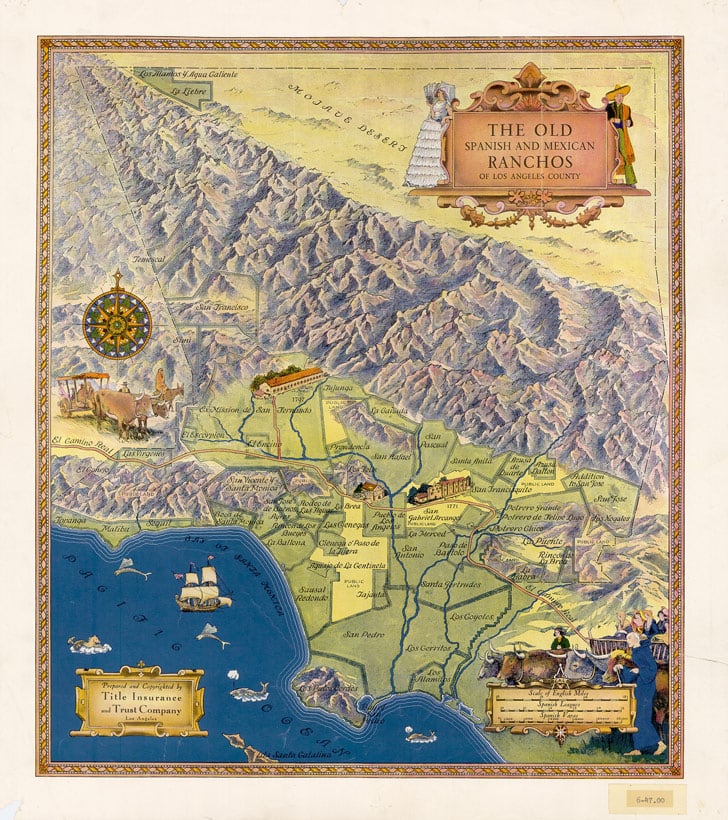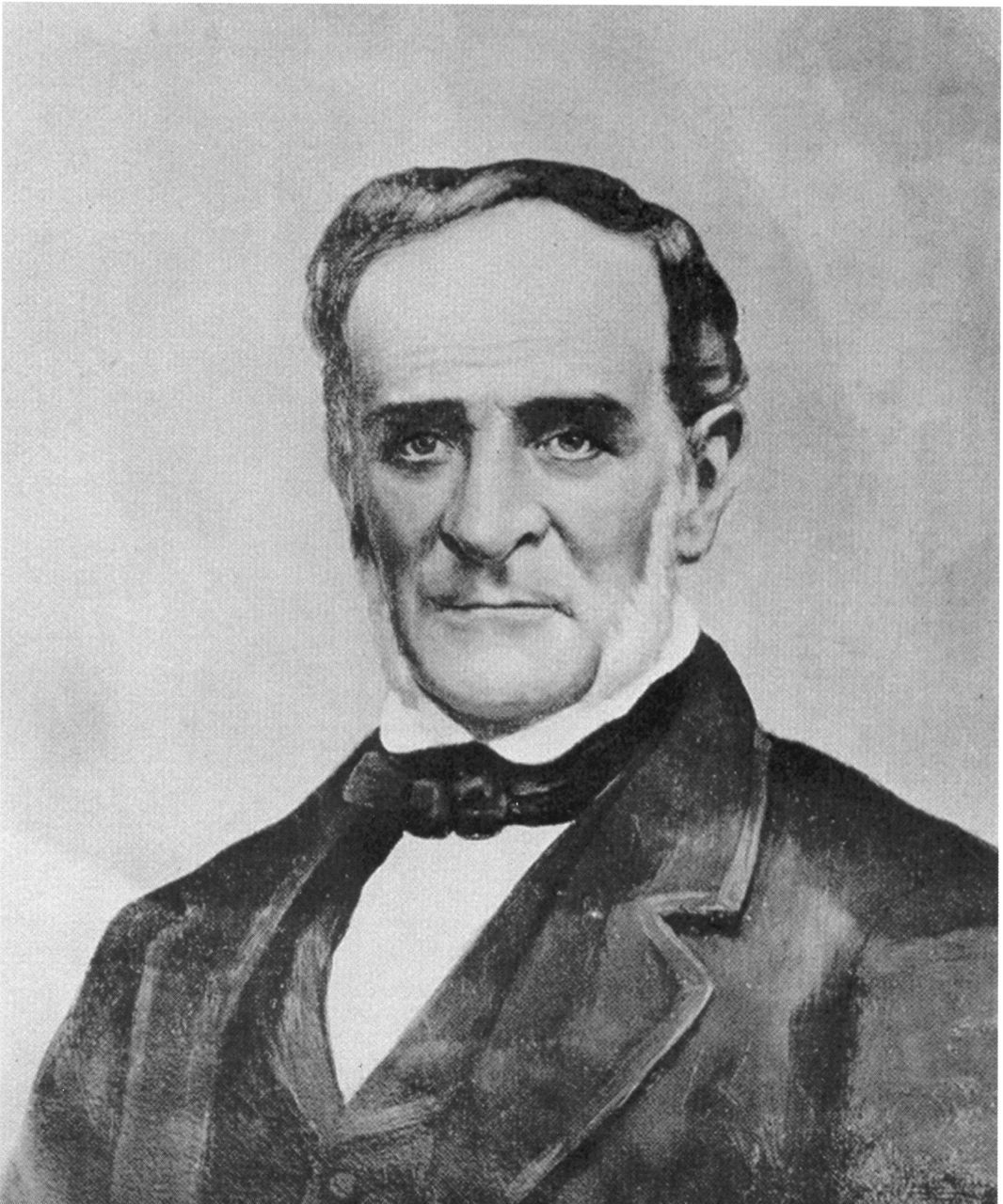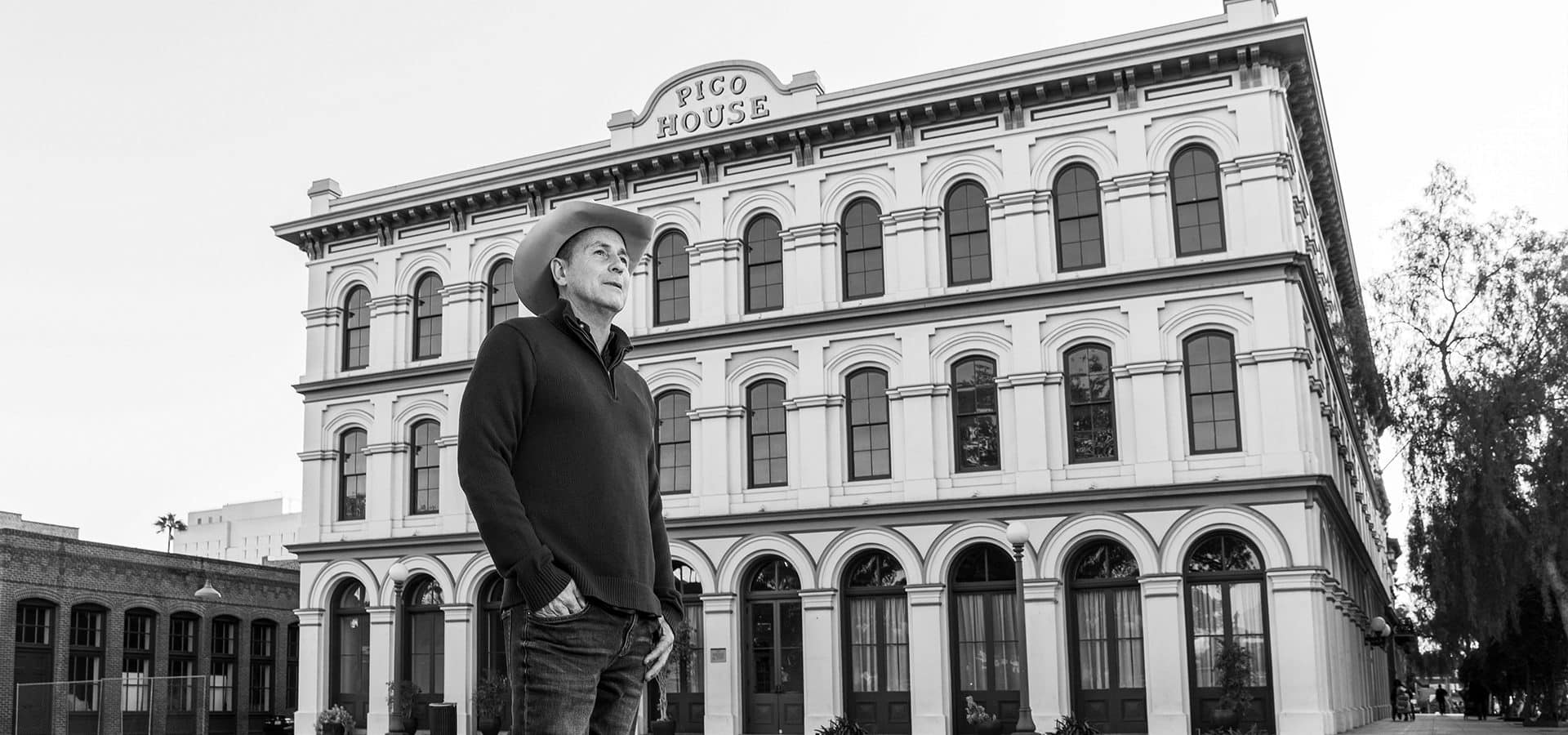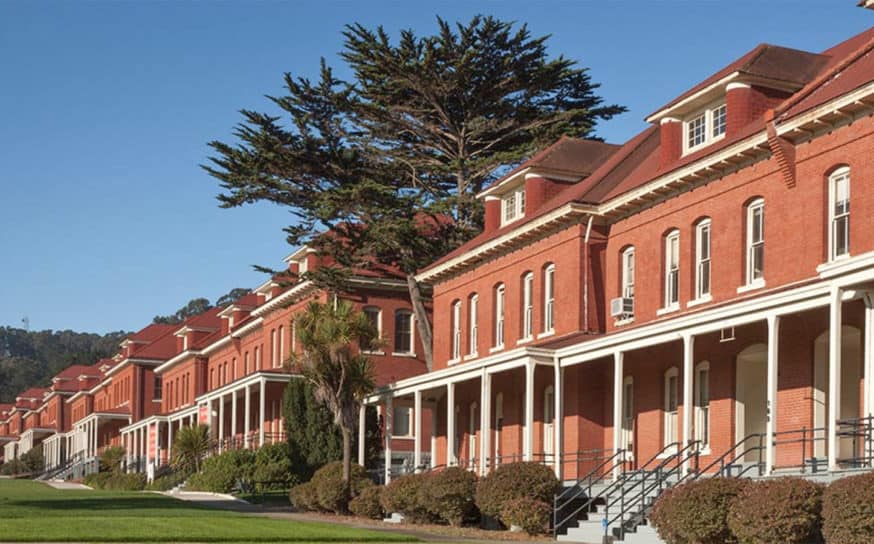A Longtime Angeleno and Former Cowboy Dramatizes the Ranching Dons Who Founded Los Angeles
Navigating the intersection of
Sepulveda and Pico.
-
CategoryArts + Culture, Film + TV, Time Capsule
-
Written byBonnie Graves
-
Photographed byMonica Orozco
As a Spanish-speaking, non-native Angeleno, I’ve always found it funny how many locals have no idea what their local street and town names mean, let alone know about the families behind those names. But while I knew that Pico meant peak, I did not know anything about Pío Pico for whom the thoroughfare is named. Ditto on Sepulveda. That was until I got to chatting with cowboy-turned-screenwriter Curtis Hein, whose journey from Topanga Canyon to the gridiron at USC to ranching in Modoc and back again reads like a script in and of itself. Over the last decade, Curtis has done extensive research and documentation on the early ranchero days of Los Angeles, cumulating in a historically inspired screenplay called The Days of the Dons.

Map courtesy of Los Angeles Public Library
Curtis’ family story speaks of a modern Los Angeles, where legacy is often built on the playing field. His grandfather, Mel Hein Sr., was an NFL legend who played 15 seasons for the New York Giants before transitioning to a coaching career that included stints with the LA Dons, the LA Rams and the USC Trojans. Dad Mel Hein Jr., was a pole vaulter at USC who once held the indoor world record; he later coached track at Taft High School and built its nationally recognized program. Curtis himself earned a football scholarship to USC while brother Gary Hein became a world-renowned rugby star. A third brother, Cody, was a volleyball prodigy who coached at Chico State for 13 years. One wonders about the teenage grocery bills when Curtis and his brothers were growing up in Topanga Canyon.
“Ranchers are some of the smartest people in the world,” Curtis told me as we caught up over coffee to discuss his passion project–a scripted series devoted to telling the origin story of Los Angeles through the lens of its legendary Dons, the ranching scions who owned wide swaths of the city and who were willing to do just about anything to hold onto that land.
Disenchanted with football but armed with a USC degree in urban regional planning, Curtis opted to go rural himself. He spent some years working as a professional cowboy in Modoc, where he learned roping and all aspects of ranch management. A chance visit to the 23,000-acre Rancho Mission Viejo down south sparked his interest in “El Viaje de Portola,” the traditional horseback ride of over 300 “Portolas” whose members vow to preserve the spirit of early California heritage.
Curtis’ own canyon heritage and professional planning expertise align with the story of Ernie Marquez, for example. Ernie is directly descended from Francisco Marquez who, along with Don Ysidro Reyes, was deeded the original Rancho Boca de Santa Monica in 1839 that would eventually become Pacific Palisades. The Marquez and Reyes families lived in Rustic Canyon under the flags of three different countries (Spain, Mexico and the U.S.) without ever moving.
Curtis met Ernie though a mutual Topanga friend, Alli Acker.” I was honored to visit with him,” he recalls. “He seems so interested in his own California culture, and the era known as ‘The Days of The Dons.’ Los Angeles, and Hollywood specifically, has its own great Western story to tell, and it’s the best one in my opinion. The violence here was worse than in Tombstone and Dodge City combined. The ranchos once spanned miles of coastline, and were owned by iconic names like Pico, Sepúlveda, Dominguez and Marquez, names we recognize and drive by on a daily basis in modern Los Angeles.”
A century or so later, the Hein family grew up just over the hill in Topanga, where Mel Hein Jr. was hired to steward the Trippet Ranch land that eventually became Topanga State Park. You can hike from the site of the original Marquez adobe–the first building ever built in Santa Monica–through the Palisades/Temescal gateway straight into Trippet Ranch, where the current ranger’s quarters were once the Heins’ home. It’s fun to see how land and families continually intersect in a city that is constantly reinventing itself.

Don José Sepulveda
I asked Curtis what initially sparked this decade-long research and writing project. “It was really that race,” he said, in reference to the legendary 1852 horse race between Don José Sepulveda and Don Pío Pico. “I thought it was so cool that two living, breathing historical figures would live on in a named, physical intersection that we drive through all the time. It made me want to research all the local names.”
To Curtis, Pío Pico represents all Americans. He was of Native American, Spanish and African descent and a citizen of Spain, Mexico and ultimately the United States. “He was born with absolutely nothing, then eventually owned vast amounts of land, only to lose almost all of his holdings. His was a ‘rags to riches to rags’ story for sure,” Curtis says. “Though it only lasted for a brief time, Pío is also credited with making Los Angeles, my home town, the former capital of California. It’s an honor to help tell his story via my script.”
What began as a historical hobby during the building recession of 2008 has officially grown into Hein’s magnum opus, his other full-time job that now has Hollywood interested instead of football execs. Hein is quick to credit his co-author and mom, Judy Hein, who encouraged his writing alongside his athletic achievements. And his family’s longtime passion for athletics will surely motivate him and his project to the finish line.
“The main takeaway from my time in sports would be commitment,” he says. “If you join a team, or make a family for that matter, you have signed up for something that requires a commitment to the final buzzer.”
Friday Finds: California Candies
We’ve got a sweet tooth.
The Lodge at the Presidio Arrives This Summer
There’s a new place to stay overnight at San Francisco’s Presidio.
Get the Latest Stories





